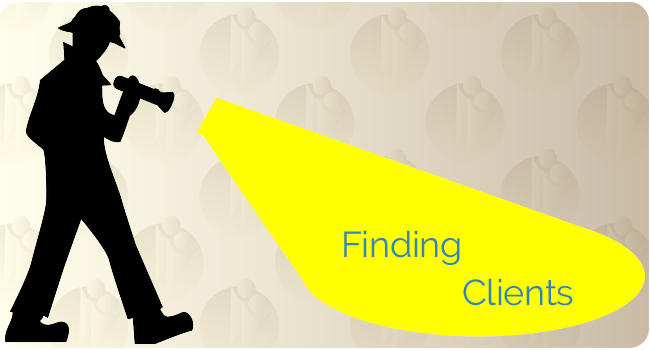Secrets to converting prospects to clients
This page may contain links to Amazon.com or other sites from which I may receive commission on purchases you make after clicking on such links. Read my full Disclosure Policy

If I was to ask you why you market your business, you’d probably say it’s to get more clients, right? Well, according to Michael Charest’s “Master the Sales Process” presentation at the 2014 NAPO Conference, you would be wrong!
The Purpose of Marketing
Michael declares that the only reason for marketing is to secure consultations – yes, he is a huge advocate of offering free consultations. By allowing prospective clients to experience your value, they can then decide whether they want to hire you. At the same time, you have an opportunity to decide whether you want to take them on as a client.
When I started out as an organizer, I offered a free 30-minute consultation because that’s what was taught in the course I took. However, I discontinued this practice when I found it wasn’t producing the results I needed. Because I found it difficult to demonstrate my value in only 30 minutes, I often ended up staying for 40 minutes or even an hour, and if a client lived far away, that consultation would easily take 2 hours out of my day. That would have been fine if the consultation had led to bookings, but in many cases it did not. Had I followed a structured sales process like the one outlined in Michael Charest’s conference session, things might have turned out very differently.
How to Conduct Successful Consultations
These are the top three strategies recommended by Michael that were lacking in my own consultations:
1. Ask your potential client to prepare for your meeting by considering their answers to these three questions:
- What do you want?
- How will you feel when you get it?
- How will you feel if you don’t?
Your time together will be more productive when both you and the client have a better sense of their emotional needs.
2. Take control of the session by having a specific agenda. Tell the client how long it will take and do not go over that time.
3. Let the client know up front that at the end of the session, if you feel there’s a good fit and that you can help them with their situation, you’ll be asking for their business, and ask if they’re okay with that. This shows respect by putting them in control, and you’ll feel more comfortable when the time comes to ask for the sale.
In his presentation, Michael also covered establishing trust and rapport with your prospects and effectively handling objections – two very important steps to closing the sale.
If you have an opportunity to hear him speak, I encourage you to take advantage of it. It will be time well spent!
Image © iStock.com / olm26250




Good advice. The efficiency and efficacy of the consultation is critical to a profitable business. We have found phone consultations meet the bill for determining fit – if we can provide what the client needs and if they are the kind of client we love to serve. From there, it’s worth getting in a car to work together. With travel times easily at 40 minutes each way we have found this works well.
That suggestion actually came up during the Q&A session. The phone consultation would be the first step, to see whether there’s a good fit. If so, you book one in-person session, but you don’t quote for the balance of the job until you’ve had a chance to see the space in question.
Thanks for sharing, Clare!
Janet,
Thank you for sharing this information. I have asked two of the three questions:
What do you want?
How will you feel when you get it?
The one I haven’t asked is:
How will you feel if you don’t?
And, what a powerful question that is! I will add it to my initial client conversation assessment.
Best,
Anne
I love it when two experts suggest the same thing – kind of confirms that it’s a great idea! And I’m especially glad that I was able to share some information to help you and the students of your professional organizer training programs.
Love, love, love those questions! I’m adding them to my strategy session checklist now! I also appreciate your advice about setting an agenda. It helps put the clients mind at ease (what exactly IS she going to do?), shows respect, creates an easier transition into asking for the sale, and helps keep you on time!
Fabulous post – thanks for sharing!!!
You’re welcome! It was such great information that I couldn’t just keep it to myself! My local VA group is having a sales coach speak at our next meeting, so I’ll be getting even more ideas – now I need to put them into action!